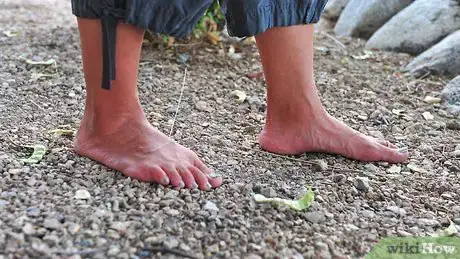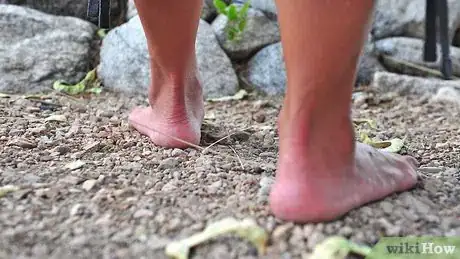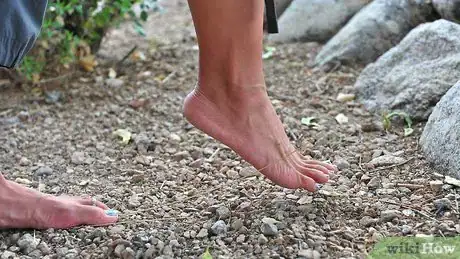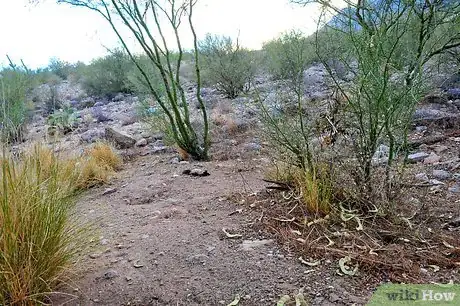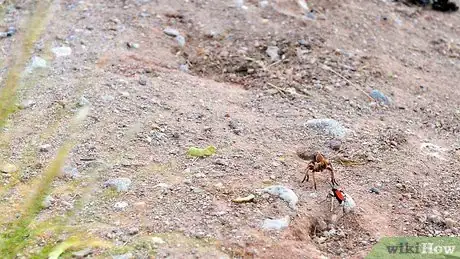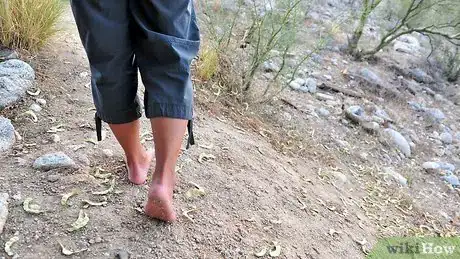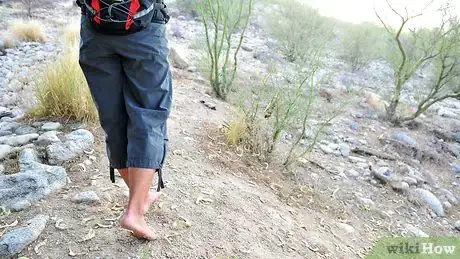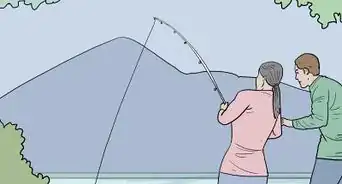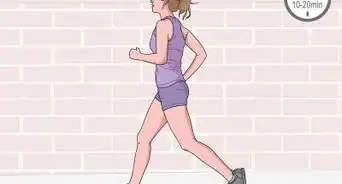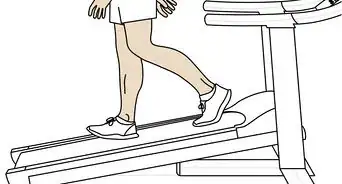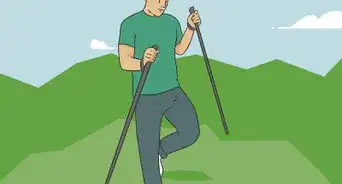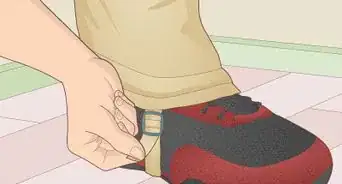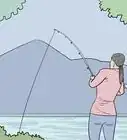This article was co-authored by Eric Martinez. Eric Martinez is a Registered Clinical Exercise Physiologist and the Vice President of Infinity Sports Institute in Miami, Florida. With over a decade of experience, Eric specializes in clinical exercise physiology, human optimization, and sports science. He works with professional and Olympic athletes as well as high-risk patients. Eric holds an MS in Exercise Physiology from Barry University and is a Registered Clinical Exercise Physiologists in the State of Florida. Eric holds 15 different certifications in specialties such as strength and conditioning, injury prevention, neuro biomechanics, and Kinesio taping. He trains hundreds of coaches in Nero and Clinical Physiology certifications.
wikiHow marks an article as reader-approved once it receives enough positive feedback. In this case, 100% of readers who voted found the article helpful, earning it our reader-approved status.
This article has been viewed 98,399 times.
In 2001, two sisters hiked the Appalachian Trail - Barefoot![1] But surprisingly, barefoot hikers aren't necessarily thrill-seekers. They're better described as sensation-seekers, with some comparing it to the foot's equivalent of wine tasting.[2] With practice and attentiveness, your feet can adapt to the great outdoors, and anyone can experience a hike in a whole new way. Here is a suggested approach for the beginning barefoot hiker.
Steps
-
1Spend some time in your front or backyard barefoot. Try different surfaces. Take your time, look around and flex your toes. If you have some local streets, parks or nature centers that are appropriate (not too much traffic or litter) you can extend your pre-conditioning to those areas.
-
2Try to interpret the new sensations as just that: new sensations. At first, the unfamiliar textures may overwhelm the nerves in your feet. The first ten minutes or so for a beginning barefooter can be the most difficult. You will be in a process of adjustment. Most find that after this time (sometimes just as they were about to give up), the going became considerably easier.
- The reason why it may feel painful to walk barefoot on gravel at first is because your feet need to feel the ground for proprioception and balance, and while wearing shoes, their senses are blunted, so the feet become more sensitive in response.
Advertisement -
3Always step straight down. Never allow your bare feet to kick, shuffle, or drag along the ground. It is horizontal force that makes you likely to get cuts or blisters.
-
4Always watch the path ahead. Stop if you want to take a good look at something off the path. When your bare feet are in motion, focus most often on the part of the path two to three paces in front. This practice will become very important when you hike on stony or uneven terrain. You should definitely start on your first day of barefoot hiking even if you are on the mildest of trails.
- This becomes natural with time using the feedback from your soles and your eyes naturally processing the ground.
-
5Develop habits of awareness. You must never forget you are going barefoot so always devote a part of your attention to your bare soles. Be careful and deliberate as you rotate and maneuver your feet around obstacles. You should be ready to retract a step if you don't like the feeling of what you are stepping on.
- Occasionally, you will step on something pointy even though you looked carefully before placing your foot. If it's too late to retract a step, quickly shift the weight onto other parts of your foot (heel --> ball, and so on). As you become more conditioned, this will be less of a problem since your soles will be thicker and the (now stronger and more agile) muscles and tendons of your feet will be more adapted to rapid re-configuration.
- The textures under your feet are a good reminder you are barefoot.
-
6Select a short trail with a variety of surfaces for your first barefoot hike. If there is a gravel lead-in, consider the end of the gravel as the beginning of the hike. Later, short to medium sections of gravel will be just another texture to you. When you have finished your first day, your feet may seem sore. One of the best things about barefoot hiking is the vibrant, tough, and resilient feeling that comes into the feet over the next one or two days as this soreness dissipates.
-
7Continue short hikes about once or twice a week. You'll find that you'll be able to go further and on rougher trails as time passes. "Mileage" will vary, but typically you should be able to do four or five miles on easy to medium trails within a month or so. If you take the time to find small-grade gravel paths in local city parks and work out on them, the toughening process can be accelerated considerably.
-
8Know your terrain. In places with big stretches of thorns or poison ivy/oak/sumac, you may need to bring protection. Some plants produce little spiky burrs that may hurt if you step on them, and certain trees produce spike balls. Areas prone to parasites, like hookworm, or bloodsuckers like ticks, mosquitoes, and fleas, should be avoided. Avoid places with anything that can bite or sting, plants (nettles) included. Areas below freezing will likely require footwear, and so will any surface that can burn your feet.
Community Q&A
-
QuestionWhat if my feet start aching?
 Community AnswerThen take some rest wherever possible. You can also gently massage them.
Community AnswerThen take some rest wherever possible. You can also gently massage them. -
QuestionIs there any particular advice about avoiding venomous animals if I live in Australia?
 Community AnswerResearch the animals so that you know all about their habits. Try to find out if there is scientific evidence or recommendations on what to do when you come in contact with them.
Community AnswerResearch the animals so that you know all about their habits. Try to find out if there is scientific evidence or recommendations on what to do when you come in contact with them. -
QuestionWhat kind of shoes would be suitable for barefoot hiking?
 Community AnswerGenerally, no shoes is the way to go, hence the "barefoot" in the name. However, you could try VivoBarefoot hiking shoes as VivoBarefoot is a barefoot shoe brand.
Community AnswerGenerally, no shoes is the way to go, hence the "barefoot" in the name. However, you could try VivoBarefoot hiking shoes as VivoBarefoot is a barefoot shoe brand.
Warnings
- It is not advisable to go barefoot on farms, in tropical countries, or in shared camp or hostel showers, because of the risk of tetanus and parasitical infections.⧼thumbs_response⧽
- Consult a qualified medical professional before attempting barefoot hiking. Certain conditions (like nerve damage and poor circulation) may cause small lesions to heal more slowly or not heal at all. This type of activity might not be recommended under these circumstances.⧼thumbs_response⧽
References
- ↑ http://www.barefoothikers.org/barefoot-sisters.html
- ↑ http://www.nytimes.com/2006/09/22/travel/escapes/22hike.html?8dpc
- East Bay Barefoot Hikers - Original source, shared with permission.
- "The Barefoot Hiker" by Richard Frazine. Ten Speed Press. ISBN 0-89815-525-8. Some of the material in this article was adapted from this book.
